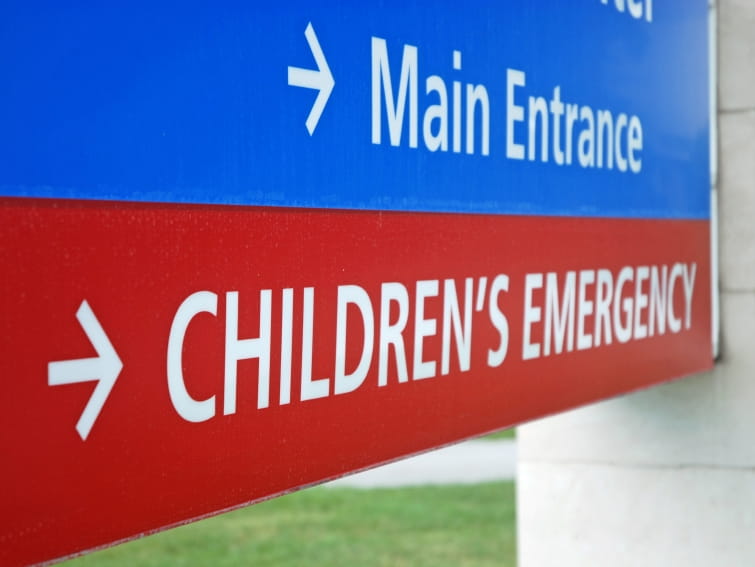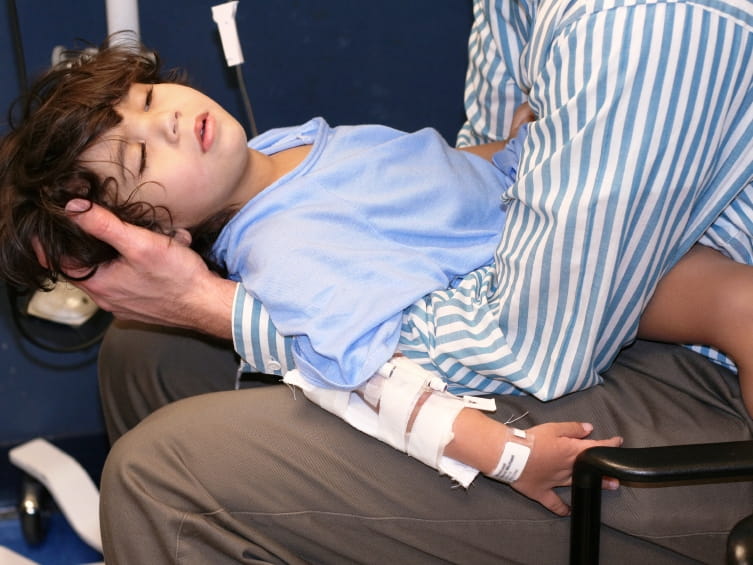Buprenorphine: Dangerous to Children

The Bottom Line
Buprenorphine is prescribed for adults with opioid dependence or chronic pain. Most buprenorphine poisoning in children occurs due to improper storage of the medication. Symptoms of buprenorphine poisoning in children are drowsiness, vomiting, slow breathing, increased heart rate, and agitation. Coma and death have also been reported.

The Full Story
Buprenorphine is the active ingredient in the brand name medications Suboxone® and Subutex®. It is a medication used for pain control in both humans and pets. It is also used to treat opioid dependence in adults. It is almost never prescribed to children.
At one time, patients who were addicted to heroin or other opioids could only be treated in a "methadone clinic" or other center. Patients had to go back every day; multiple days of treatment were dispensed only for weekends.
In 2000, the Drug Addiction Treatment Act allowed physicians with special training to prescribe buprenorphine to these patients. Now patients could be treated privately, in their physicians' offices. With easier access to their medication and proper monitoring by their doctor, people would be more likely to stay in treatment. But, because buprenorphine became more available in homes, there were more opportunities for buprenorphine poisonings to occur in both adults and children.
Buprenorphine comes in two forms, as a tablet or a film. A "film" is a thin, rapidly dissolving strip that contains medication. Both are used by holding in the mouth. This allows better absorption of the medication. Since they are designed to be held in the mouth, they are pleasantly flavored.
Small children may mistake buprenorphine pills or films for candy. The source is usually a caregiver, a parent, or a visiting relative or friend. The exposure happens most often in the child's own home. A small child who chews, licks, or swallows only part of a tablet may become unresponsive, stop breathing, or even die. Common symptoms of buprenorphine poisoning in children are drowsiness, vomiting, slow breathing, increased heart rate, and agitation.
Also, teenagers may abuse buprenorphine to get high or to harm themselves.
Anyone who uses buprenorphine must take extra precautions to keep it away from children.
If anyone is unintentionally exposed to buprenephrine, or takes too much, use the webPOISONCONTROL® online tool for guidance or call Poison Control at 1-800-222-1222 right away.
Take Home Message:
- Buprenorphine is prescribed for adults being treated for opioid dependence or chronic pain. It is also prescribed as a pain medication for pets after surgery.
- Common symptoms of buprenorphine poisoning in children are drowsiness, vomiting, slow breathing, increased heart rate, and agitation. Coma and death have also been reported.
- Most buprenorphine poisoning in children occurs due to improper storage of the medication in the home.
Nicole Reid, RN, BSN, MEd
Certified Specialist in Poison Information
Poisoned?
Call 1-800-222-1222 or
Prevention Tips
- Keep the medicine out of sight and reach, preferably locked up. Keeping your medication under lock and key or using a combination lock ensures only you have access and not your young children or teens.
- Keep the medication in its original child resistant container. Do not transfer the pills to pill minders or other containers for convenience.
- Do not leave loose tablets out for future use. Children can find tablets easily on counters, dressers, in purses and bags, etc. It may take you some extra time to go get your pills every time you need them, but keeping the pills out of the hands of your little ones could save their lives.
- Do not take pills in front of your children. Children imitate adults and they will often imitate parents taking medication.
- Dispose of packaging securely. The pill containers and wrappings may have enough drug residue left on them to cause symptoms if a child finds them and puts them in the mouth.
- If someone takes buprenorphine that is not prescribed to them, call 1-800-222-1222 for help immediately.
This Really Happened
A 15-month-old child swallowed about one quarter of a buprenorphine film. She became agitated, developed a fast heart rate, and was taken to the hospital. Within 90 minutes of arrival to the emergency room, she became drowsy and was breathing too slowly. Oxygen and intranasal naloxone (an antidote for opioids) were administered. Her breathing rate remained slow. The child was admitted to a pediatric intensive care unit (PICU) and was placed on a naloxone intravenous drip. The child remained in the PICU for 2 days until the effects of the buprenorphine wore off. She was discharged home with no lasting effects.
For More Information
FDA, How to Dispose of Unused Medicines
NCADD's Consumer Guide to Medication-Assisted Recovery
Buprenorphine sublingual (Medline Plus, a service of the U.S. National Library of Medicine, National Institutes of Health)
References
Poisoned?
Call 1-800-222-1222 or
Prevention Tips
- Keep the medicine out of sight and reach, preferably locked up. Keeping your medication under lock and key or using a combination lock ensures only you have access and not your young children or teens.
- Keep the medication in its original child resistant container. Do not transfer the pills to pill minders or other containers for convenience.
- Do not leave loose tablets out for future use. Children can find tablets easily on counters, dressers, in purses and bags, etc. It may take you some extra time to go get your pills every time you need them, but keeping the pills out of the hands of your little ones could save their lives.
- Do not take pills in front of your children. Children imitate adults and they will often imitate parents taking medication.
- Dispose of packaging securely. The pill containers and wrappings may have enough drug residue left on them to cause symptoms if a child finds them and puts them in the mouth.
- If someone takes buprenorphine that is not prescribed to them, call 1-800-222-1222 for help immediately.
This Really Happened
A 15-month-old child swallowed about one quarter of a buprenorphine film. She became agitated, developed a fast heart rate, and was taken to the hospital. Within 90 minutes of arrival to the emergency room, she became drowsy and was breathing too slowly. Oxygen and intranasal naloxone (an antidote for opioids) were administered. Her breathing rate remained slow. The child was admitted to a pediatric intensive care unit (PICU) and was placed on a naloxone intravenous drip. The child remained in the PICU for 2 days until the effects of the buprenorphine wore off. She was discharged home with no lasting effects.
